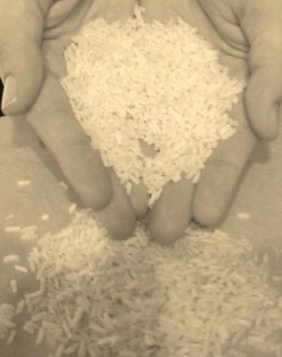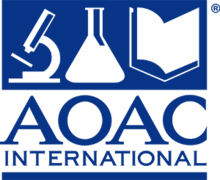
The United States Food and Drug Administration is a federal agency of the Department of Health and Human Services. The FDA is responsible for protecting and promoting public health through the control and supervision of food safety, tobacco products, caffeine products, dietary supplements, prescription and over-the-counter pharmaceutical drugs (medications), vaccines, biopharmaceuticals, blood transfusions, medical devices, electromagnetic radiation emitting devices (ERED), cosmetics, animal foods & feed and veterinary products.

Current good manufacturing practices (cGMP) are those conforming to the guidelines recommended by relevant agencies. Those agencies control the authorization and licensing of the manufacture and sale of food and beverages, cosmetics, pharmaceutical products, dietary supplements, and medical devices. These guidelines provide minimum requirements that a manufacturer must meet to assure that their products are consistently high in quality, from batch to batch, for their intended use.
The United States Pharmacopeia (USP) is a pharmacopeia for the United States published annually by the over 200-year old United States Pharmacopeial Convention, a nonprofit organization that owns the trademark and also owns the copyright on the pharmacopeia itself.

Maltodextrin is a name shared by two different families of chemicals. Both families are glucose polymers, but have little chemical or nutritional similarity.

Food policy is the area of public policy concerning how food is produced, processed, distributed, purchased, or provided. Food policies are designed to influence the operation of the food and agriculture system balanced with ensuring human health needs. This often includes decision-making around production and processing techniques, marketing, availability, utilization, and consumption of food, in the interest of meeting or furthering social objectives. Food policy can be promulgated on any level, from local to global, and by a government agency, business, or organization. Food policymakers engage in activities such as regulation of food-related industries, establishing eligibility standards for food assistance programs for the poor, ensuring safety of the food supply, food labeling, and even the qualifications of a product to be considered organic.

A tree nut allergy is a hypersensitivity to dietary substances from tree nuts and edible tree seeds causing an overreaction of the immune system which may lead to severe physical symptoms. Tree nuts include almonds, Brazil nuts, cashews, chestnuts, filberts/hazelnuts, macadamia nuts, pecans, pistachios, shea nuts and walnuts.
The Center for Food Safety and Applied Nutrition is the branch of the United States Food and Drug Administration (FDA) that regulates food, dietary supplements, and cosmetics, as opposed to drugs, biologics, medical devices, and radiological products, which also fall under the purview of the FDA.
In China, the adulteration and contamination of several food and feed ingredients with inexpensive melamine and other compounds, such as cyanuric acid, ammeline and ammelide, are common practice. These adulterants can be used to inflate the apparent protein content of products, so that inexpensive ingredients can pass for more expensive, concentrated proteins. Melamine by itself has not been thought to be very toxic to animals or humans except possibly in very high concentrations, but the combination of melamine and cyanuric acid has been implicated in kidney failure. Reports that cyanuric acid may be an independently and potentially widely used adulterant in China have heightened concerns for both animal and human health.
ConsumerLab.com, LLC. is a privately held American company registered in White Plains, NY. It is a publisher of test results on health, wellness, and nutrition products. Consumer Labs is not a laboratory, but contracts studies to outside testing laboratories. It purchases dietary supplement products and other consumer goods directly from public storefronts and online retailers, contracts for testing by private laboratories, and publishes reports based on the results. It primarily derives revenue from the sale of subscriptions to its online publications, which are paywalled. Other sources of revenue include a proprietary certification program, licensing fees, contents re-publication license fees, and advertising.
Verification and validation are independent procedures that are used together for checking that a product, service, or system meets requirements and specifications and that it fulfills its intended purpose. These are critical components of a quality management system such as ISO 9000. The words "verification" and "validation" are sometimes preceded with "independent", indicating that the verification and validation is to be performed by a disinterested third party. "Independent verification and validation" can be abbreviated as "IV&V".

Food sampling is a process used to check that a food is safe and that it does not contain harmful contaminants, or that it contains only permitted additives at acceptable levels, or that it contains the right levels of key ingredients and its label declarations are correct, or to know the levels of nutrients present.

Asthma & Allergy Friendly is a registered certification mark operated by Allergy Standards Limited in association with not-for-profit asthma and/or allergy organizations. They specialise in labelling products which have been put through and have passed standardised testing. The Asthma & Allergy Friendly Certification Program was created to scientifically test and identify consumer products that are more suitable for people with asthma and allergies.
Nutrition analysis refers to the process of determining the nutritional content of foods and food products. The process can be performed through a variety of certified methods.
Reading Scientific Services Ltd. (RSSL) is a British company providing scientific analysis, consultancy, product development and training to the global food, drink, healthcare, pharmaceutical, biopharmaceutical and consumer goods sectors. It has been inspected by regulatory authorities including the U.S. Food and Drug Administration, the Medicines and Healthcare products Regulatory Agency and the United Kingdom Accreditation Service.

NSF is a product testing, inspection, certification organization with headquarters in Ann Arbor, Michigan. NSF also offers consulting and training services worldwide.
The Institute for Food Safety and Health (IFSH) is a research consortium consisting of the United States Food and Drug Administration's Center for Food Safety and Applied Nutrition, Illinois Institute of Technology (IIT) and the food industry. Under the cooperative agreement, the Institute was established by IIT to bring together the food safety and technology expertise of academia, industry and government as a consortium in the common goal of enhancing and improving the safety of food for U.S. consumers.
The Food Chemicals Codex (FCC) is a collection of internationally recognized standards for the purity and identity of food ingredients.
For the American folk singer and songwriter, see Nancy Ames.
A certificate of analysis (COA) is a formal laboratory-prepared document that details the results of one or more laboratory analyses, signed—manually or electronically—by an authorized representative of the entity conducting the analyses. This document gives assurances to the recipient that the analyzed item is what it is designated to be, or has the features advertised by the producer. The design and content of a COA may be based upon a set of requirements identified by the lab, by regulatory-driven requirements, and/or by standards developed by standard developing organizations. The COA is used in a wide variety of industries, including but not limited to the agriculture, chemical, clinical research, food and beverage, and pharmaceutical industries.
Rowshan Reordan is the founder and CEO of Green Leaf Lab LLC. Founded in 2011, as the first accredited, woman-owned cannabis and hemp CBD analytical testing laboratory in the United States certified by the Women Business Enterprise National Council (WBENC) and AOAC International.







